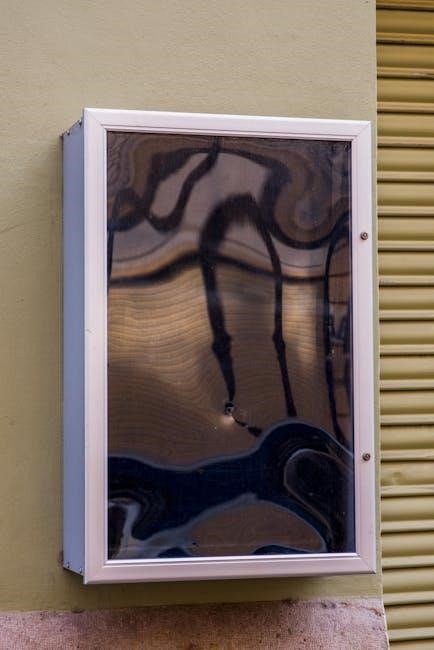Vertical metal siding offers a sleek, modern appearance while providing exceptional durability and weather resistance. It’s a popular choice for homeowners seeking low-maintenance exterior solutions with timeless appeal.
1.1. Types of Vertical Metal Siding
Vertical metal siding is available in various styles to suit different architectural preferences. Common types include board and batten, which mimics traditional wood designs, and corrugated metal siding, offering a rustic, industrial look. Additionally, panel-style siding provides a sleek, modern aesthetic with concealed fasteners. Each type varies in panel depths, such as 7/8″ or 1-3/8″, and can be installed horizontally or vertically for versatile design options. These styles ensure durability, low maintenance, and a customizable exterior for homes and buildings.
1.2. Benefits of Vertical Metal Siding
Vertical metal siding offers numerous advantages, including exceptional durability and resistance to weathering, pests, and fire. Its low-maintenance design reduces the need for frequent repairs or replacements. It also provides excellent thermal insulation, helping to regulate indoor temperatures and lower energy costs. The sleek, modern appearance enhances curb appeal, while its resistance to fading ensures long-lasting color retention. Additionally, metal siding is eco-friendly, as it can be recycled, making it a sustainable choice for homeowners seeking a durable and aesthetically pleasing exterior solution.
1.3. Design and Aesthetic Options
Vertical metal siding offers a wide range of design and aesthetic options to suit various architectural styles. Homeowners can choose from different panel depths, such as 7/8″ or 1-3/8″, and select from a variety of finishes and colors. The sleek, modern appearance of vertical siding enhances curb appeal, while options like board and batten styles add a traditional touch. Additionally, decorative trim and flashings can be customized to complement the siding, providing a polished and cohesive look. This versatility allows for tailored designs that match individual preferences and property aesthetics.
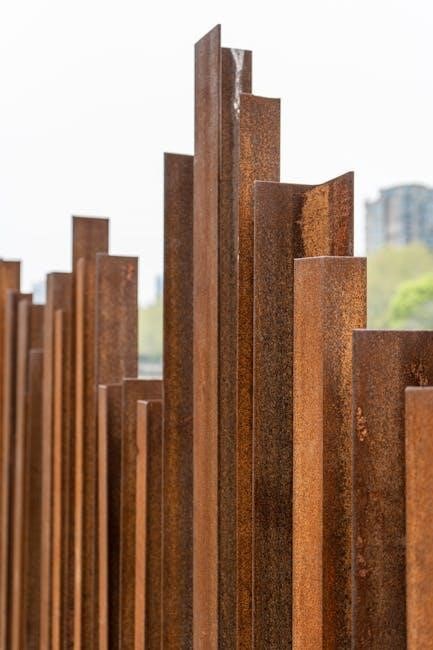
Preparation for Installation
Proper preparation is essential for a successful vertical metal siding installation. Ensure walls are level, measure surfaces accurately, and gather all necessary tools and materials beforehand.
2.1. Assessing Wall Condition
Assessing the wall condition is crucial before installing vertical metal siding. Ensure walls are structurally sound, level, and free from damage. Check for cracks, rot, or uneven surfaces that may require repair. Verify that existing materials like wood or sheathing are secure and provide a stable base for siding installation. Address any issues to prevent future problems and ensure proper panel alignment and performance. A thorough inspection guarantees a smooth and successful installation process.
2.2. Measuring the Wall Surface
Accurately measuring the wall surface is essential for a successful vertical metal siding installation. Measure the height and width of each wall section to determine the total area to be covered. Record these measurements to calculate the exact amount of siding and materials needed. For walls with complex shapes or obstructions, divide the area into smaller, manageable sections. Ensure measurements are precise to avoid material waste and fit issues during installation. This step ensures a smooth and efficient workflow for the entire project.
2.3. Tools and Materials Needed
Essential tools for vertical metal siding installation include a tape measure, level, drill, screwdriver, and metal-cutting saw. Materials required are furring strips, sheathing, metal siding panels, fasteners, and weatherproof sealants. Additional items like corner posts, J-channels, and trim pieces ensure a polished finish. Safety gear, such as gloves and goggles, is also necessary. Gathering all tools and materials beforehand streamlines the process and prevents delays. Proper organization ensures each component is readily available when needed, making installation efficient and stress-free.

Wall Preparation Steps
Proper wall preparation ensures a smooth installation. This includes leveling surfaces, installing furring strips, and applying sheathing to create a stable base for vertical metal siding.
3.1. Leveling the Walls
Leveling the walls is the first step in preparing for vertical metal siding installation. Ensure all surfaces are even and plumb to prevent panel misalignment. Use a level tool to check for any deviations and make necessary adjustments. If the wall is uneven, consider using shims or additional framing materials to achieve a smooth surface. Proper leveling ensures a professional finish and prevents future issues with panel fit and appearance.
3.2. Installing Furring Strips
Furring strips are essential for creating a stable surface for vertical metal siding. Install them vertically, spaced 16–24 inches apart, ensuring they are level and securely fastened. Use wood or metal strips, depending on the substrate. These strips provide a nailing surface and help maintain even spacing for the siding panels. Properly fasten each strip to the wall, checking for level and plumb to ensure a straight installation. This step is crucial for achieving a smooth, professional-looking finish with your vertical metal siding.
3.3. Applying Sheathing
After installing furring strips, apply sheathing to cover the entire wall surface. Use materials like plywood, OSB, or rigid foam, ensuring they are securely fastened to the strips. Sheathing provides a smooth, even base for the siding and adds structural integrity. It’s crucial for preventing warping and ensuring proper panel alignment. Cover all areas evenly, avoiding gaps, and check for levelness to guarantee a stable substrate for your vertical metal siding installation. This step is vital for achieving a professional and durable finish.

Installing Key Components
Install corner posts, J-channels, and starter strips to create a secure framework for your siding. These components ensure proper alignment and provide a solid base for panel attachment.
4.1. Corner Posts Installation
Corner posts are essential for vertical metal siding, providing a sturdy framework at each corner. Begin by ensuring the wall surfaces are level and plumb. Measure and mark the corners accurately. Attach the posts using compatible fasteners, aligning them with the wall studs for maximum stability. Secure each post tightly to prevent movement. Proper installation ensures the siding panels fit seamlessly, maintaining structural integrity and aesthetic appeal. Follow manufacturer guidelines for spacing and alignment to achieve professional results.
4.2. J-Channel Placement
J-channel is installed along the top and bottom edges of the wall to provide a smooth surface for the siding panels. It ensures proper alignment and prevents water infiltration. Measure and cut the J-channel to fit the wall dimensions, securing it with screws or nails. This step is crucial for creating a seamless transition between panels and maintaining a professional finish. Proper placement guarantees the siding fits neatly, enhancing both functionality and visual appeal. Always follow manufacturer instructions for optimal results.
4.3. Starter Strips and Trim
Starter strips are essential for initiating the siding installation process. They are typically installed along the bottom and top edges of the wall, providing a secure base for the panels to attach. These strips ensure proper panel alignment and prevent shifting during installation. Trim is then added around doors, windows, and corners to seal gaps and create a finished look. Properly installed starter strips and trim enhance the overall appearance and durability of the siding, ensuring a professional and polished result. Follow manufacturer guidelines for precise placement and secure fastening.
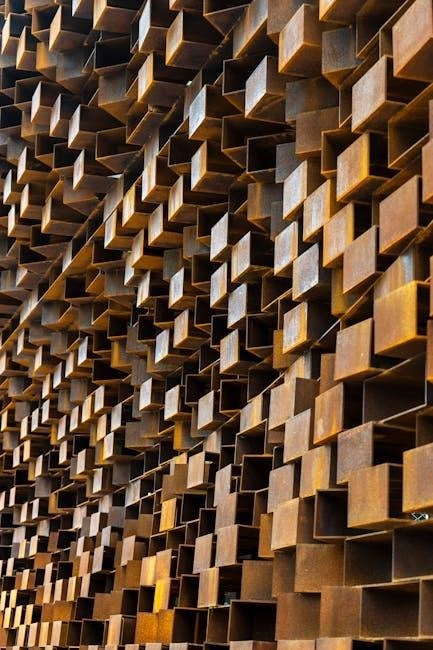
Hanging the Metal Panels
Hanging metal panels involves aligning them with furring strips and securing with fasteners. Start at the bottom, ensuring each panel is level and plumb. Properly spaced fasteners prevent warping. Align joints seamlessly for a cohesive look, and leave slight gaps for thermal expansion. Follow manufacturer guidelines for fastener placement and spacing to ensure structural integrity and a polished finish.
5.1. Panel Alignment and Layout
Proper panel alignment is crucial for a seamless vertical metal siding installation. Begin by marking wall studs to guide panel placement. Start at the bottom, aligning the first panel with the corner post. Use a level to ensure panels are straight and plumb. Each subsequent panel should fit snugly against the previous one, maintaining consistent spacing. Pre-drill holes for fasteners to prevent metal warping. Align joints between panels carefully to avoid misalignment and ensure a uniform appearance. Follow manufacturer guidelines for layout patterns to achieve professional results.
5.2. Securing Panels to Furring Strips
Start by ensuring furring strips are securely fastened to the wall. Align the metal panels with the strips, using screws or nails specifically designed for metal siding. Install fasteners through the panel flanges into the furring strips, spacing them evenly (typically 12-16 inches apart). Begin at the bottom and work upward to prevent water from seeping behind the panels. Use a level to ensure panels remain straight and plumb. Tighten fasteners firmly but avoid overtightening, which could distort the metal. Double-check alignment as you progress to maintain a smooth, even surface.
5.3. Handling Panel Joints and Seams
When handling panel joints and seams during vertical metal siding installation, ensure they are properly aligned and sealed. Begin by aligning the edges of adjacent panels precisely, using a level to maintain straightness. Apply a thin layer of weatherproof sealant or caulk to the seam, then securely fasten the panels together using appropriate fasteners, such as stainless steel screws, spaced evenly as recommended by the manufacturer. Leave a small gap (about 1/8 inch) to accommodate thermal expansion and contraction. Wipe away excess sealant for a clean finish. Regularly inspect and reseal joints over time to maintain water resistance and structural integrity.
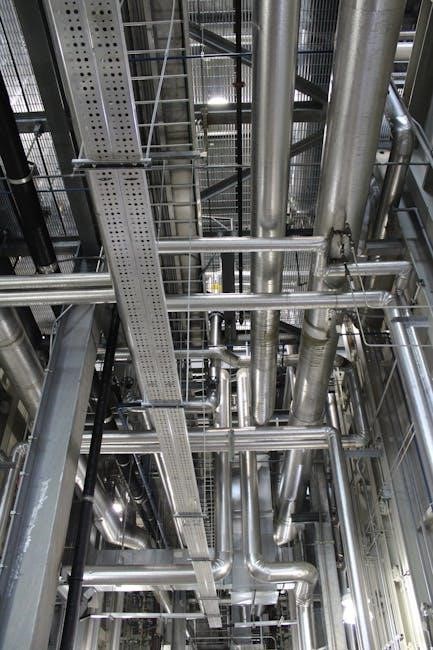
Special Considerations
Consider thermal expansion, proper fastener placement, and sealing gaps to ensure weather tightness and structural integrity in vertical metal siding installation.
6.1. Thermal Expansion and Contraction
Thermal expansion and contraction are critical factors in vertical metal siding installation. Metal expands when heated and contracts when cooled, affecting panel alignment and structural integrity. Proper fastener spacing and joints must be considered to accommodate movement. Materials like steel and aluminum have specific expansion rates, requiring precise installation techniques to prevent warping or buckling. Expansion joints should be incorporated to allow for natural movement without compromising the siding’s appearance or functionality. Regular inspections and maintenance can help mitigate issues caused by thermal fluctuations over time.
6.2. Fastener Placement and Patterns
Proper fastener placement is essential for vertical metal siding to ensure stability and prevent movement. Screws should be spaced 12 inches on center for residential applications, while commercial projects may require tighter spacing. Fasteners must be driven straight and secure to avoid warping the panels. Concealed fasteners are recommended for a seamless look, with screws placed at the top and bottom of each panel. Vertical panels over 10 feet may need additional fasteners to prevent buckling. Always follow manufacturer guidelines for specific materials and designs to ensure optimal durability and appearance.
6.3; Sealing Gaps and Joints
Proper sealing of gaps and joints is critical to ensure weatherproofing and structural integrity. Use high-quality silicone or polyurethane-based sealants to fill gaps between panels and trim. Apply sealant at panel joints, corners, and edges, ensuring a watertight bond. Inspect all seams during installation and reseal as needed. Regularly inspect and maintain seals to prevent leaks and damage from weather exposure. This step ensures long-term durability and maintains the sleek appearance of vertical metal siding.
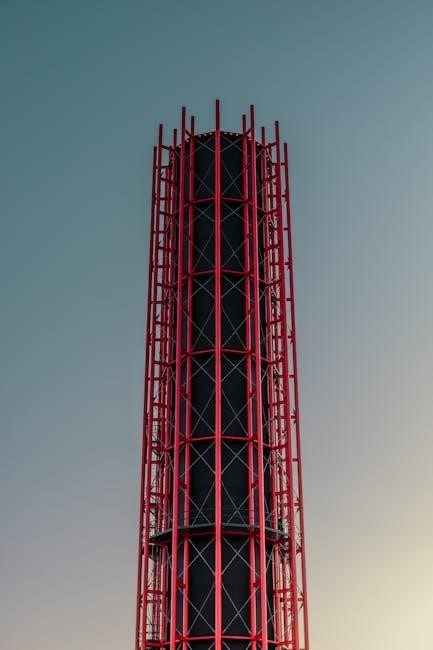
Finishing Touches
Complete the installation by adding trim, flashings, and exterior corners for a polished look. Ensure all edges are secure and sealed for a professional finish.
7.1. Installing Exterior Corners
Exterior corners require precise installation to ensure a seamless and weather-tight finish. Start by measuring and cutting the corner posts to the exact height of the wall. Secure them using screws or nails, ensuring they are aligned with the siding panels. Use a level to verify straightness and plumbness. Once in place, attach the corner caps to cover the raw edges, providing a neat and polished appearance. Properly sealed corners prevent water intrusion and enhance the overall durability of the siding system.
7.2. Adding Trim and Flashings
Trim and flashings are essential for completing the siding installation, ensuring a polished look and proper weather sealing. Measure and cut trim pieces to fit around windows, doors, and edges. Secure them using compatible fasteners, aligning them with the siding panels. Flashings should be installed at rooflines, vents, and other penetrations to direct water away from the siding. Use sealants to close gaps between trim and siding, ensuring a watertight seal. Choose trim materials like PVC or metal for durability and a seamless match with your siding system.
7.3. Final Inspection and Touch-ups
Conduct a thorough inspection to ensure all panels, trim, and flashings are correctly installed. Check for alignment, secure fasteners, and sealed seams. Address any gaps or misalignments promptly. Clean the siding to remove dirt or debris, and touch up any scratches or dents with matching paint. Verify that all components are watertight and visually consistent. This final step ensures your vertical metal siding installation is complete, durable, and visually appealing, ready to withstand the elements for years to come.
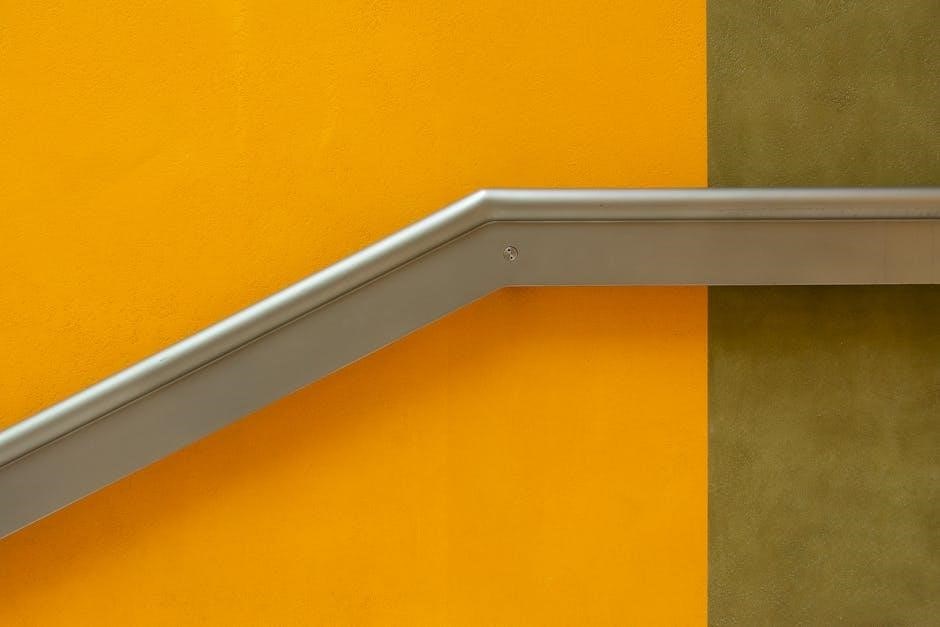
Maintenance and Upkeep
Regular maintenance ensures the longevity and appearance of vertical metal siding. Clean surfaces, inspect for damage, and repaint as needed to maintain durability and aesthetic appeal;
8.1. Cleaning Vertical Metal Siding
Cleaning vertical metal siding is essential for maintaining its appearance and durability. Use a mild detergent mixed with water and a soft-bristle brush to gently scrub the surface. Avoid harsh chemicals or abrasive materials that could damage the finish. Rinse thoroughly with a hose to remove dirt and soap residue. For tougher stains, a solution of equal parts water and white vinegar can be effective. Regular cleaning prevents dirt buildup and ensures the siding remains rust-free and vibrant; This simple maintenance step extends the lifespan of your siding.
8.2. Inspecting for Damage
Regularly inspect vertical metal siding for dents, rust, or gaps between panels. Check for loose or missing fasteners, which can compromise the siding’s integrity. Look for signs of water damage or staining, as these may indicate leaks. Inspect seams and joints for proper alignment and sealing. Use a checklist to systematically evaluate each section of the siding. Address any damage promptly to prevent further issues. If unsure about the severity of damage, consult a professional to ensure the siding remains protective and visually appealing.
8.3. Repainting and Refinishing
Repainting vertical metal siding can restore its appearance and protect it from further damage. Before repainting, clean the surface thoroughly to remove dirt and rust. Use a metal-specific primer and high-quality exterior paint designed for metal surfaces. Ensure the paint is compatible with your siding material. Light scratches or fading can often be addressed with a fresh coat. For extensive damage or corrosion, consider refinishing or replacing the affected panels. Regular maintenance ensures the siding remains durable and visually appealing over time.
Common Mistakes to Avoid
Common errors include improper wall preparation, incorrect fastener usage, and ignoring thermal expansion. Ensure walls are level, use compatible fasteners, and account for material movement to avoid issues.
9.1. Improper Wall Preparation
Improper wall preparation is a common mistake that can lead to uneven surfaces and compromised structural integrity. Ensure walls are level, plumb, and free from cracks or rot. Uneven surfaces can cause panels to shift or buckle, while loose or damaged substrates may result in fastener failure. Always install furring strips correctly and verify sheathing is securely attached. Neglecting these steps can lead to costly repairs and a shortened lifespan of the siding. Proper preparation ensures a smooth, stable base for vertical metal siding installation.
9.2. Incorrect Fastener Usage
Using the wrong fasteners or improper spacing can compromise the structural integrity of vertical metal siding. Always use compatible screws designed for metal siding to prevent rust or corrosion. Fasteners should be spaced evenly, typically 12-16 inches apart, to ensure panels remain secure. Over-tightening can damage the panels, while under-tightening may lead to loose siding. Proper fastener placement and tension are critical to withstand weather conditions and maintain a sleek appearance. Follow manufacturer guidelines to avoid costly repairs and ensure long-lasting performance.
9.3. Ignoring Thermal Movement
Ignoring thermal movement is a common mistake that can lead to significant issues. Metal expands and contracts with temperature changes, and failing to account for this can cause panels to buckle, fasteners to loosen, or seams to gaps. Proper installation requires leaving space for expansion and contraction, especially at joints and fasteners. Always follow manufacturer guidelines for expansion joints and fastener spacing to ensure the siding remains secure and visually appealing over time. Neglecting this step can result in costly repairs and compromised structural integrity.

Troubleshooting Common Issues
Identify and address leaks promptly by sealing gaps and joints. Repair dented panels to maintain structural integrity. Treat rust or corrosion early to prevent spread and damage.
10.1. Dealing with Leaks
Addressing leaks in vertical metal siding is crucial to prevent water damage and maintain structural integrity. Inspect the siding for gaps or improper sealing, especially around joints and fasteners. Common causes include loose fasteners, improper panel alignment, or damaged sealants. To fix leaks, reseal gaps with weatherproof sealants and tighten any loose fasteners. Ensure all joints are securely closed and consider replacing damaged panels if necessary. Regular inspections can help identify and resolve issues before they escalate, ensuring long-term durability and performance of the siding.
10.2. Fixing Dented or Damaged Panels
For dented or damaged vertical metal siding panels, assess the extent of the damage first. Small dents can often be repaired with a rubber mallet or specialized tools without removing the panel. Larger damages may require panel replacement. Loosen surrounding fasteners to remove the damaged section, then install a new panel, ensuring proper alignment and secure fastening. Apply weatherproof sealants to edges to prevent leaks. If damage is extensive, consult a professional to avoid further issues and maintain the siding’s structural integrity and appearance.
10.3. Addressing Rust or Corrosion
Rust or corrosion on vertical metal siding can compromise its durability and appearance. To address this, clean the affected area thoroughly with a wire brush and apply a rust-inhibiting treatment. For minor corrosion, sand the area and repaint with weather-resistant paint. In severe cases, replace the damaged panel entirely. Regular inspections and touch-ups can prevent rust from spreading. Applying a protective coating during installation and ensuring proper sealing of joints also helps mitigate corrosion risks. Always follow manufacturer guidelines for treatments and repairs to maintain your siding’s integrity and warranty.
Vertical metal siding offers a durable, stylish solution for exterior walls, enhancing both curb appeal and protection against harsh weather conditions while requiring minimal maintenance over time.
11.1. Final Thoughts on Vertical Metal Siding
Vertical metal siding is a versatile, durable, and visually appealing option for homeowners. It offers excellent weather resistance, minimal maintenance, and a modern aesthetic. While DIY installation is possible, professional expertise ensures optimal results. With proper care, vertical metal siding provides long-lasting protection and enhances curb appeal, making it a worthwhile investment for any property. Its sleek design and robust construction make it a popular choice for those seeking both functionality and style in their exterior walls.
11.2. Encouragement for DIY Enthusiasts
For DIY enthusiasts, installing vertical metal siding can be a rewarding project. With the right tools and a methodical approach, homeowners can achieve professional-grade results. Start by ensuring walls are level and properly prepared. Follow manufacturer guidelines for furring strips, sheathing, and panel alignment. While challenges like thermal expansion and fastener placement require attention, patience and careful planning can lead to a successful installation. The satisfaction of transforming your home’s exterior yourself makes the effort worthwhile, especially with the durability and aesthetic benefits vertical metal siding offers.
11.3. Importance of Professional Help
While DIY installation is possible, hiring a professional ensures a flawless and long-lasting vertical metal siding installation. Experts handle complex aspects like thermal expansion, proper fastener placement, and seamless panel alignment. They also address potential issues like uneven walls and structural gaps, preventing future damage. A professional’s expertise guarantees compliance with manufacturer guidelines and local building codes, saving time and avoiding costly mistakes. For a stress-free, high-quality finish, trusting a skilled contractor is highly recommended.

Additional Resources
Explore manufacturer guidelines, installation videos, and recommendations for local contractors to ensure a successful vertical metal siding project with reliable support and expert advice.
12.1. Manufacturer Guidelines
Consult manufacturer guidelines for specific instructions tailored to your vertical metal siding product. Many companies, like ASC Building Products, offer detailed manuals and installation videos. These resources provide step-by-step guidance, tool lists, and best practices to ensure a flawless installation. Quality Edge and LP SmartSide also offer comprehensive guides. Always follow recommended screw patterns, panel alignments, and sealing methods to avoid leaks or damage. Properly installed siding ensures durability and warranty compliance, so adhering to manufacturer instructions is crucial for long-term performance and satisfaction.
12.2. Installation Videos and Tutorials
Installation videos and tutorials provide visual guidance for vertical metal siding projects. Manufacturers like ASC Building Products and Quality Edge offer step-by-step tutorials covering wall preparation, panel alignment, and finishing touches. These resources are ideal for DIY enthusiasts and professionals alike, ensuring proper techniques are followed. Tutorials often include tips for handling specific materials, troubleshooting common issues, and achieving a seamless finish. They cater to all skill levels, making complex installation steps more manageable and ensuring a successful, professional-looking result.
12.3. Local Contractor Recommendations
For a flawless vertical metal siding installation, consider hiring local contractors with proven expertise. Reputable companies like ASC Building Products and Quality Edge recommend certified professionals. Look for contractors with experience in metal siding, positive reviews, and proper licensure. Ensure they offer warranties and post-installation support. Local contractors can provide tailored solutions, addressing specific regional challenges and ensuring compliance with local building codes. Their hands-on experience guarantees a durable, visually appealing result, enhancing your home’s exterior while maintaining structural integrity and aesthetic appeal.
